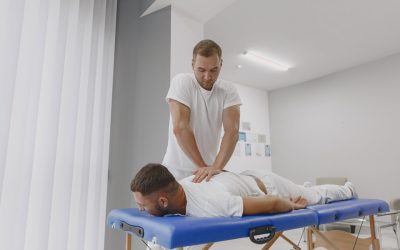Structural Integration has come a long way in the past century. From its humble beginnings as a manual therapy technique to becoming an accepted form of treatment for a variety of conditions, Structural Integration has made a big impact on the health and wellness industry. In this article, we will take a closer look at the history of Structural Integration and explore some of the key milestones that have helped make it what it is today.
Origin
Though the exact origins of Structural Integration are unknown, the work of Dr. Ida P. Rolf is often credited as the root of the approach. Dr. Rolf was a biochemist and physical therapist who developed her unique approach to healing the body, which she called Structural Integration. In contrast to traditional massage techniques which focused on relaxing muscles, Dr. Rolf’s approach focused on restoring balance and alignment to the body, and she believed that this could be achieved through manual manipulation of the muscles and tissues. She developed a system of manual manipulation and movement education which sought to restore balance and alignment to the body, improving function and reducing pain.
The Development Of Structural Integration
In the early 1920s, a doctor named Ida P. Rolf developed a system of bodywork that she called Structural Integration. Dr. Rolf believed that the body was not meant to be in pain and that by realigning the body’s structures, it could be free from pain and tension. She developed her techniques through years of study and practice and eventually opened her school to teach others her methods. Structural Integration quickly gained popularity, and soon people from all over the world were traveling to see Dr. Rolf for treatment. Her techniques were unlike anything else available at the time, and they offered real results for people who were struggling with chronic pain or tension headaches. Over the years, Dr. Rolf continued to refine her methods and teach others how to perform her techniques.
Foundation Of Structural Integration
The early years of Structural Integration were marked by growth and expansion. In the 1950s, Dr. Rolf began to formalize her approach and develop a curriculum for training others in her techniques. She also founded the Rolf Institute, which continues to be one of the leading schools for Structural Integration today. The 1970s saw a big shift in the field of Structural Integration, as researchers began to study the effects of this approach on different aspects of health. This led to an increase in acceptance of Structural Integration as a form of treatment, and more people began to see it as a viable option for improving their health and wellbeing. Many practitioners were using Dr. Rolf’s techniques to help people with a variety of conditions, including chronic pain, tension headaches, and scoliosis. In addition, researchers had begun to study the effects of Structural Integration on the body, and they were finding that it could be helpful for a wide range of issues. As word spread about the benefits of Structural Integration, more and more people began to seek out treatment from qualified practitioners.
The Evolution
Since its inception, Structural Integration has continued to evolve and grow. In the 1980s and 1990s, the field of Structural Integration began to branch out into new directions. More practitioners began to specialize in specific areas such as sports medicine or pregnancy massage. This allowed for a greater depth of knowledge and expertise within the field, and it helped to further legitimize Structural Integration as a form of treatment. In recent years, there has been a renewed interest in the benefits of Structural Integration, and more people are discovering what this approach can do for them. With more research being conducted on its effects, Structural Integration is becoming increasingly accepted as a valuable form of treatment for a variety of issues.
The Present Of Structural Integration
Structural Integration has come a long way since its inception nearly 100 years ago. Today, it is an accepted form of treatment for a variety of conditions and is used by practitioners all over the world. Thousands of people have experienced the benefits of Structural Integration, and research continues to support its efficacy in helping people achieve better health and wellbeing. If you are interested in learning more about this approach or trying it out for yourself, be sure to seek out a qualified practitioner. With continued use, Structural Integration can help you achieve balance and alignment in your body, reducing pain and tension and improving your overall health and wellbeing.
It is amazing how far Structural Integration has come and we are excited to see where it goes in the future. We believe in the benefits of Structural Integration and want to share them with as many people as possible. If you would like to experience the benefits of Structural Integration for yourself, please call us today. Our team would be more than happy to answer any questions you have and help set up an appointment for you.
Are You an Athlete Experiencing Pain But Don’t Know Where to Turn for Help?
Beyond Ergonomics gives athletes and desk professionals answers to their pain problems. Body imbalances, repetitive use, and lack of movement are the cause of many injuries and pain. Beyond Ergonomics helps you discover your imbalances and create change. MedicinEvolution’s purpose is to reduce pain and other symptoms that you haven’t had luck with. MedicinEvolution Bodywork Beyond Massage is the solution for many problems plaguing your body. Make your appointment today!






0 Comments